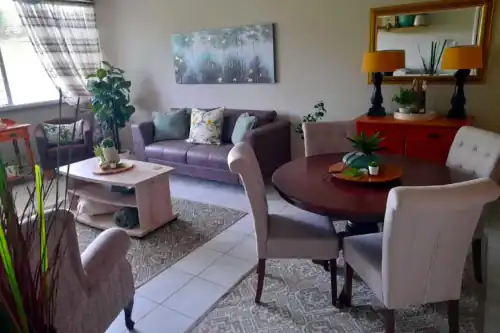Why Continuous Care Retirement Communities (CCRCs) Are Becoming the Gold Standard for Secure Senior Living
Retirement is often framed as a finish line. You downscale, settle in, and hope your plans match your needs. But what if they don’t? Most retirees believe a one-time move will cover every stage of aging—but that’s a gamble.
Yet the smartest retirement plans don’t bet on stability. They built it in. Enter Continuous Care—an approach to senior living that prioritizes adaptability and long-term security, allowing people to live freely without fearing the unknown.
In our previous post, we explored turning passion into business during retirement—Ignite Your Golden Years—and we discussed reigniting purpose and energy in later life—Inspiration. Today, we tackle how to ensure your lifestyle evolves as your needs do, without sacrificing independence, dignity, or connection.
This post reveals how Continuous Care Retirement Communities (CCRCs) deliver peace of mind through flexible housing, built-in healthcare, and true community. We’ll explore how to evaluate them wisely, avoid common pitfalls, and secure your best years with confidence.
Modern Living Flats

Basic Cottages

Modern Comfort Cottages

Comfortable Frail Care

The Case for Continuous Care
Traditional retirement planning assumes life remains steady. You move into one home and hope it serves you until the end. But aging is dynamic. Health, mobility, and support needs can shift dramatically in just a few years—or even months.
Continuous Care accounts for this reality. CCRCs offer a structure that supports multiple stages of aging—from complete independence to assisted living, skilled nursing, and memory care—without forcing you to move or adjust to a new environment each time (AARP, 2020).
In South Africa, more high-income, forward-thinking retirees are recognising that the cost of not planning is far greater than the price of preparation (SouthAfrica.info, n.d.). Continuous Care ensures your needs won’t outgrow your home—or your peace of mind.
What Sets CCRCs Apart
At first glance, CCRCs may look like upscale retirement villages. But their real value lies in what’s built behind the scenes: a complete care ecosystem.
Residents start in independent living—often beautiful cottages or apartments—with access to communal amenities like fitness centers, libraries, wellness programs, and vibrant activity calendars. Should health needs arise, they can shift to higher levels of care, without the emotional trauma of relocation (SeniorLiving.org, 2023).
For couples, CCRCs are uniquely helpful. If one spouse needs extra support while the other remains independent, they can stay close, avoiding separation anxiety and emotional strain.
These communities offer more than practical care—they foster joy, security, and a renewed sense of control.

The Emotional and Social Edge
While safety and health services are critical, what often surprises new residents is the emotional boost that comes from community-based living.
Many retirees underestimate the toll of isolation after leaving their workplace or downsizing from family homes. CCRCs counteract that with built-in social environments—book clubs, morning walks, craft groups, choir practice, and spontaneous garden chats (RetirementLiving.com, n.d.).
Having neighbors close by who are in a similar life phase creates a sense of belonging. Friendships form naturally. Purpose returns. Even for introverts, the comfort of proximity to others can dramatically improve mental health.
Studies show that seniors in socially active communities report higher satisfaction and longer lifespans (AARP, 2020).
Understanding Contract Types
A CCRC is not just a place—it’s a contract. And understanding your financial and care obligations is non-negotiable. Here are the most common options (SeniorLiving.org, 2023):
- Type A (Life Care): Offers full access to all care levels for a predictable monthly fee after a larger upfront payment.
- Type B (Modified): Features moderate upfront and monthly fees, with partial care included. Additional services may incur extra charges.
- Type C (Fee-for-Service): Has the lowest entry fees, but you’ll pay market rates if your care needs increase.
Work closely with a financial planner and legal advisor to review the fine print, including refund clauses, escalation policies, and what happens to fees if you leave or pass away.
What to Watch Out For
While CCRCs promise convenience and security, not all communities deliver equally. Here are the common red flags—and how to address them:
- Financial Overstretch: Entrance fees can run into millions of rands (Moneyweb, 2021). Ensure your finances can support these costs over time.
- Opaque Contracts: Terms around refunds, care limits, or fee increases are often dense. Never sign without having a legal professional review every clause.
- Inconsistent Oversight: South Africa lacks uniform CCRC regulation. Prioritise communities affiliated with reputable governing bodies.
- Provider Instability: Ask for financial audits, reserve fund statements, and records of past fee increases.
- Mismatch in Culture: Attend social events, talk to residents, and spend time in communal spaces before deciding.
- Limited Care Availability: Ask about staff-to-resident ratios, waitlists, and plans for scaling services in the future.
How to Choose the Right CCRC
Here’s how to assess your options with clarity:
- Tour Intentionally: Visit during different times of day. How do staff and residents interact?
- Try a Short Stay: Use this time to test the pace, atmosphere, and food.
- Request Financials: Ask for annual increases, reserves, and funding history.
- Dig Into Care Quality: Ask how fast residents can transition to higher care and what medical professionals are on site.
- Clarify Dispute Processes: What happens if something goes wrong?
- Ask About Turnover: High staff turnover is a red flag for deeper management issues.
The right CCRC will make you feel at ease from day one, not just on paper, but in how it treats people.
Common Pitfalls in Choosing a CCRC and How to Overcome Them
| Potential Pitfall | Description | How to Overcome |
| Financial Burden | Entrance fees and rising monthly costs | Plan with a financial advisor |
| Contract Complexity | Confusing or lengthy contracts | Review documents with a legal expert |
| Provider Instability | Risk of bankruptcy or management change | Ask for audits, fee history, and occupancy rates |
| Lack of Oversight | Some CCRCs are lightly regulated | Choose those affiliated with oversight bodies |
| Limited Social Fit | Culture mismatch or community misalignment | Visit, stay temporarily, talk to residents |
Note. Adapted from SeniorLiving.org (2023).
The Secure Retirement You Deserve
Retirement shouldn’t feel uncertain. And it doesn’t have to.
Continuous Care is not a luxury—it’s a strategy. It allows you to age on your terms, surrounded by support, safety, and community. From independent living to expert healthcare, you never have to trade freedom for stability.
We’ve broken down the structure, options, and watchouts of CCRCs. With preparation and professional input, you can avoid common traps and design a lifestyle that’s both joyful and resilient.
And when that time comes, knowing you’ll be cared for—in the same community, with familiar faces—makes all the difference.
For more information on the friendliest retirement accommodation in Northern KwaZulu-Natal, or to schedule a viewing, please visit our homepage: https://lagratitude.co.za
References
AARP. (2020, April 16). Continuing care retirement communities: What to know. https://www.aarp.org/caregiving/basics/info-2020/ccrc-continuing-care-retirement.html
Moneyweb. (2021, June 18). What to consider when planning your retirement in South Africa. https://www.moneyweb.co.za/retirement-planning-in-south-africa/
RetirementLiving.com. (n.d.). Continuing care retirement communities. https://www.retirementliving.com/continuing-care-retirement-communities
SeniorLiving.org. (2023). What is a Continuing Care Retirement Community (CCRC)? https://www.seniorliving.org/retirement/ccrcs-explained/
SouthAfrica.info. (n.d.). Retirement homes and facilities in South Africa. https://www.southafrica.info/services/retirement-homes/
You can make a difference
With your assistance, the volunteers at La Gratitude will be able to take better care of not only the residents at the old age home but also the greater Newcastle community. La Gratitude is constantly involved in outreach projects to help the elderly in need in and around Newcastle.
Your donations will be greatly beneficial in the provision of food and other basic necessities for the less fortunate elderly people that require assistance.
Donating is easy, click here to donate now.








